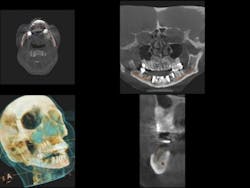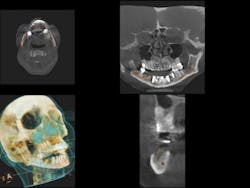Ask Dr. Christensen
Gordon J. Christensen, DDS, MSD, PhD
In this monthly feature, Dr. Gordon Christensen addresses the most frequently asked questions from Dental Economics® readers. If you would like to submit a question to Dr. Christensen, please send an e-mail to [email protected].
For more on this topic, go to www.dentaleconomics.com and search using the following key words: bonding agents, etch and rinse, self-etch, bond to dentin, bond to enamel, bonding techniques, Dr. Gordon Christensen.
Q: My patients often ask me how long a restoration should serve in the mouth. I have my opinions, but I have practiced only 11 years. I do not have enough long-term perspective to provide an adequate estimate for my patients. Please give me some averages for amalgam, composite, ceramic, and cast gold alloy restorations.A: You have asked a very important question, and I will answer it to the best of my knowledge, based both on reported averages in the literature and my personal observations from over four decades of practice and providing thousands of restorations.
Unfortunately, many of the studies reported in the literature have been accomplished on patients in dental schools or in the military. Thus, they may or may not reflect the actual expected longevity in typical civilian dental practices. I assume you are requesting a comparison of intracoronal and extracoronal amalgam, composite, ceramic, and cast gold restorations, not crowns.
There are numerous factors to consider when estimating longevity of restorations, regardless of the restorative material used. Among them are:
- Skill of the practitioner, which is most important
- Amount of tooth structure remaining
- Physical properties of the restorative material used
- Patient cooperation at the time of placement of the restoration
- Quality of the finished restoration
- Occlusion
- Nature of the patient's diet (coarse or soft foods)
- Cariogenicity of the patient's diet
- Oral hygiene
Therefore, any average longevity reported in the literature has so many variables that it is impossible to combine them to estimate an overall longevity average.
Amalgam
Many studies have observed the longevity of amalgam because it has been used since the mid-1800s. Experienced clinicians find amalgam relatively easy to place, as it's consistency allows it to be compacted into tooth preparations. Contact areas can be reproduced well, and the compaction forces easily push the material into the line and point angles of tooth preparations. It can be placed in locations in which resin-based composites are nearly impossible to place. Although moisture contamination should be avoided, it is obvious from clinical observation that amalgam restorations are still successful when moisture contamination is impossible to avoid.
Many articles in the dental literature show amalgam restorations to serve well for a range of different averages, from four years to 11 years. Let's say the average is 10 years and the amalgam restoration costs the patient $166 for an MOD (the fees used in this article are from the ADA Survey Center).
Those numbers show the patient pays about $17 per year for the service of the restoration. (I will not list the hundreds of references on amalgam service in this brief answer. You can find many of them by using online search engines such as Google Scholar or PubMed.)
These studies have been both retroactive and prospective. Are such averages typical of your observations? They do not represent the longevity of amalgam that I have observed. When amalgam has been well placed in retentive tooth preparations, carved well, and occlusion has been adjusted to be nonabusive to the restoration, I have seldom had to replace amalgams I personally placed over my 40-plus years of practice (Fig. 1). They are not beautiful, but they are still serving. If some of the negative factors I expressed previously are present, the longevity of the restoration is compromised, and failure occurs.
I suggest the following as guides for you and your patients relative to both amalgam and resin-based composite restorations:
- Amalgam should have at least 20 years of service when the isthmus of tooth preparations is limited to one third or less of the cusp-tip-to-cusp-tip distance, the restoration is well-placed by you, and none of the negative factors discussed are present. Many small amalgams will serve indefinitely.
- The service time is unpredictable and the patient should expect only a few to several years of service when the tooth preparations are wider than previously described, cusps are covered with amalgam, or some of the described negative factors are present.
In a recent analysis of payments for amalgam and composite restorations to dentists from all third-party payers by Limoli and Associates, 65% of the restorations in the last 12 months were resin-based composite, and only 35% were amalgam.
I predict that amalgam as a major restorative material in developed countries will continue to decline until it is almost totally replaced by resin-based composite. Let's face it - amalgam restorations are ugly! We may not agree with the unavoidable reduction in amalgam use, but in my opinion, it is occurring. In spite of placing thousands of amalgams during my career, I have not used it for the last 15 years. The following section of this article will explain the reasons.
Resin-based composite
Dental patients want or demand tooth-colored restorations. In some locations, placement of amalgam without offering the patient the opportunity to have composite restorations could bring about a lawsuit on the basis of "lack of informed consent."
Is composite as long lasting as amalgam? Most of the studies show clinical service averages for composite to be similar to, but slightly less than, amalgam. The average longevity reported in the literature for Class II resin-based composite restorations is about six to eight years. However, it's important to remember the inadequacies of the studies.
Do these averages coincide with your observations? The research group CLINICIANS REPORT, previously Clinical Research Associates, as well as my personal hands-on study clubs, have studied the service and longevity of posterior composite restorations since they were first introduced in 1968.
At that time, the materials were terrible and the restorations failed within a few years, regardless of their placement quality. Since about 1985, composite has been a relatively acceptable posterior tooth restoration, if placed well! The same criteria relate to tooth preparations for composite placement as previously discussed for amalgam placement.
Small composite restorations with minimal isthmus widths of one quarter of the cusp-tip-to-cusp-tip distance or even proximal boxform-only restorations can be placed in a few minutes with no difficulty. Such restorations are financially acceptable for your practice, relatively simple, and long-lasting.
On the other hand, it is my conclusion that large Class II composite restorations are not only financially unacceptable because of the time involvement, but they fail prematurely. Unfortunately, it has been our observation from the many clinical research projects we have completed on composite and amalgam that most practitioners have more difficulty placing acceptable Class II composites than placing acceptable class II amalgams.
My observations of well-placed, small-to-moderate size Class II MOD resin-based composite restorations, which have an average fee of about $226, can serve for a similar time period as amalgam, or about 15 years (Figs. 2 and 5). They cost patients slightly more than amalgam per year of service, or about $23.
Cast gold alloy restorations
It is no mystery to experienced dentists that well-placed cast gold restorations serve nearly indefinitely (Fig. 3). That has been my experience after placing thousands of them. A video I made years ago on cast gold restorations motivated me to recall many patients for whom I had placed gold restorations from 20 to 40-plus years previously. Almost none of the patients had experienced a restoration failure!
However, the literature shows an average longevity of only about 13 years. Why is there such a difference in my observations and these numbers? Without sounding egotistical, the placement quality of a cast gold restoration is more directly related to restoration longevity than with amalgam or composite.
With the exception of the esthetic appearance of gold alloy, it is almost a perfect restorative material. That is certainly not true for amalgam or composite, where the material characteristics contribute to restoration failure.
Some readers will disagree with my longevity estimates of cast gold alloy restorations, but I have had only a few of these restorations fail in my career! I suggest that well-placed cast gold alloy restorations, such as taught in the Tucker Study Clubs throughout the world, should serve at least 25 years, and many will serve more than 40 years.
If we assume 30 years as an average, and the average restoration is about $840, the gold restoration costs the patient about $28 per year of service. Is the lack of redoing restorations and frequently enlarging the tooth preparation every several years worth the extra few dollars?
In my opinion, YES! However, I completely agree that many patients will no longer accept cast gold alloy restorations because of the potential for display of the gold alloy.
Ceramic restorations, lab made, or milled in-office
There are about 11,000 to 12,000 in-office milling machines (CEREC and E4D). About 2% to 3% of restorations placed in the U.S. last year were ceramic inlays and onlays (Limoli and Associates). CEREC has been used for 25 years and E4D has been used for about five years. Additionally, many indirect ceramic restorations are made by laboratory technicians. There are numerous papers reporting on the longevity of indirect ceramic restorations cemented with resin-based composite cement. Most of these restorations are IPS Empress and various clones, or more recently IPS e.max (Figs. 4 and 5).
Surprising to many, their longevity, as reported in the literature, is very similar to averages reported for cast gold alloy restorations. CEREC restorations are frequently reported as having a 90% survival rate at 10 years. After 20 years of working with CEREC, I can state that if the same meticulous attention to detail is present using ceramic restorations as is necessary for cast gold restorations, their longevity can be 20-plus years without difficulty (Fig. 4).
Their average cost to patients is $883. This estimate makes these restorations cost about $44 per year of service. This is more than any of the other restorations I have discussed, but they are beautifully esthetic, they serve well, and patients love them!
Summary
Too many factors influence the longevity of restorations to make overall average longevity statements. However, it is my considered opinion that high-quality restorations placed in moderate sized preparations in patients who do not have the peculiar negative factors I have described should demonstrate the following longevity:
- Amalgam - 15 years
- Cast gold alloy restorations - 30 years
- Ceramic - 20 years
- Resin-based composite - 15 years
Undoubtedly, many will refute my statements, because the literature has far lower averages. My estimates are based on my personal observations in practice and my experiences in numerous study clubs over four decades. Remember - I said HIGH QUALITY!
Practical Clinical Courses has just completed one of the best videos we have ever made, "Dental Assisting for Posterior Restorations" Item V4745. This one-hour DVD demonstrates the step-by-step responsibilities dental assistants have for resin-based composite restorations and crowns, including setup, clinical procedures, and cleanup. More information is available at www.pccdental.com or by calling (800) 223-6569.
Dr. Christensen is a practicing prosthodontist in Provo, Utah. He is the founder and director of Practical Clinical Courses, an international continuing-education organization initiated in 1981 for dental professionals. Dr. Christensen is a cofounder (with his wife, Rella) and senior consultant of CLINICIANS REPORT, which since 1976 has conducted research in all areas of dentistry.

